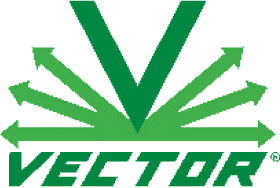2015
How Injection and Grouting Can Make a Long Term Impact on Tendons
Estimated Reading Time: 1 minute, 51 seconds

Types of Grout Damage

There are many ways that grout can corrode post-tension tendons. When it’s improperly applied in a large concrete bridge, for example, grout can have voids and residual moisture, two enemies of the steel used in post-tensioned structures.
The efficiency of using formulated, pre-packaged grout was welcomed by the construction industry. But the new grouts did not solve the corrosion problems. When it comes to post-tensioning steel, the destructive culprits resulting include chloride contamination, voids, pockets of soft grout, and segregation.
Inspecting Tendons
Vector can inspect representative areas of the commercial or industrial concrete structure with semi-destructive, conclusive testing to give a complete picture of the type of damage and what needs to be addressed. This includes penetration testing, chemical testing (for corrosive substances), strand extraction, and grout pocket excavation, as well as a Post-Tech PT Corrosion Evaluation (a highly accurate way of checking for internal moisture) and in-situ tendon testing.
The Vector team also excavates key areas and inspects the condition of grease, grout and post-tensioned strands.
We can also perform a host of non-destructive tests, including Ground Penetrating Radar (GPR), impact echo, concrete cover meters, corrosion potential and rate estimates, thermography, magnetic flux cable break detection, borescope, and elasto-magnetic and load testing.
Fixing Damage with Injection and Grouting
It’s important to provide a long term solution to this damage. One that actually addresses current and future corrosion. That is where post-tension impregnation as an anti-corrosion system comes into play.
We can also restore a parking structure or bridge’s integrity with epoxy and urethane injections that, by their very nature (flowing plastic materials), are flexible, won’t crack, and won’t corrode.
Once filled, cracks and voids are stronger than before, are chemical resistant, and create a seal against water flow.
Other important elements of concrete repair include routing and sealing cracks, sealing joints, void grouting, and structural strengthening with advanced composites.
A key ingredient in using injection and grouting to repair these important concrete structures is the compatibility of the new substance we’re introducing with the existing materials. Vector highly trained employees and engineers specialize in identifying and applying the best grouts for each situation.
